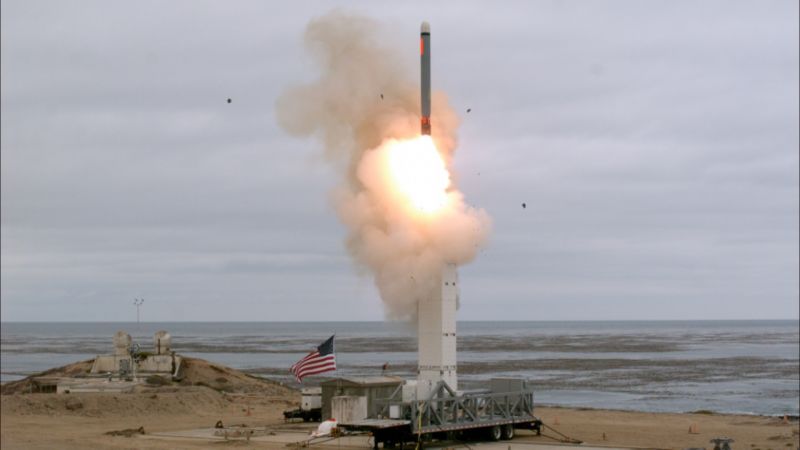
In October last year we reported on the precarious state of the 1987 INF Treaty which governs the testing and deployment of Intermediate-Range Nuclear Forces, including missiles with a range of between 500 and 5,000km. The US claimed the Russians were busy developing and fielding such missiles and protested at the testing of a new missile, the SSC-8. Further protests were lodged when Russia started to test the ultra-high-speed SS-25 “Torpol”, a road-mobile missile which might have the ability to defeat any currently-fielded defence systems.
The article mentioned the potential problems for Europe and various other nations if the US were to pull out of the agreement as a result of these Russian infringements. They include a new arms-race and the resumption of US missiles stationed in Europe, which could become the target of a Russian first-strike in the event of a major conflict. In other words, it would mark a possible return to the really bad old days of the Cold War.
America’s withdrawal from the INF Treat was confirmed on the 2nd August this year. It was recently followed by the news that the US has tested an intermediate-range nuclear-capable cruise missile which flew 500km and successfully hit the target. Further announcements from the DoD confirm that the US intends to carry out further tests in November.
On the face of things, the tests have been carried out indecently soon after the US left the Treaty, implying that they have also been flouting the regulations for some time by developing their own equivalent of the Russian’s missiles. However, closer inspection makes it clear that these are in fact only ground-launched cruise missiles, the land-based equivalent of the sub-launched cruise missile that is in widespread service with the US, UK and other navies. It is by no stretch of the imagination the US-equivalent of the Russian SS-25 Torpol, for example.
A cruise missile is a precision-guided system, aimed at high-value targets where accuracy is a major plus to make the best use of conventional warheads. They fly at about 550mph, so are quite slow and, given a competent defence system, can be shot down. Compare this with the Torpol which is three times the size, and might arrive on your doorstep at about 16,000mph; it takes a few minutes to cover the distance a cruise missile might take half a day to travel. In addition, whereas a cruise missile has an accuracy of a few meters or less, the Torpol might land some 200 metres away, which is why it needs a nuclear warhead to do its job.
What was of great interest to the Russians, perhaps, was the use of the Mk41 launch system which is already in Europe as part of a missile defence system. By adapting a cruise missile for use in that launcher, the US has made it clear that they could now deploy Tomahawks on land - and fitted with nuclear warheads. However, although the land-based cruise issue was a factor in bringing the Soviets to the table in 1987, it must be assumed that modern Russian defences would be a lot more capable of dealing with cruise-missiles today.
The US has indicated that it is now going to develop its own high-speed, intermediate-range, missile system. Whether or not this is what they are referring to when they announced another test in November is not clear, but if they were to roll out a new system by that date, it might justify Russian claims that the US were in breach of the INF agreement all-along.
Either way, this is generally not good news for global security. Furthermore, it comes at a time when increased tensions around the world are distracting from the really vital issue of trying to sort out the mess we have created on this planet in terms of pollution and climate change. It makes you ask whether the people who run places like the US, Russia or China actually have a grasp of the enormity of the crisis facing humanity, or whether they are too short-sighted and self-serving to ever address those facts.

Comments on US tests follow withdrawal from INF Treaty